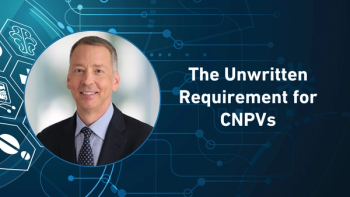
- Pharmaceutical Commerce - May/June 2012
Supply chains for a patient-centric world
Tomorrow's healthcare market, driven by consumer choice and outcomes-driven economics, will create new supply chain models
Over the course of human history, we have seen two big advances in health outcomes. The first wave, beginning in the mid-19th century, came from the adoption of modern hygiene practices, which sharply reduced medical infections and improved post-surgery survival rates. The second wave, which lasted for the better part of the 20th century, was enabled by breakthrough drugs and devices—products that have successfully waged war on numerous diseases, from smallpox and polio, to cancer and HIV.
Today, we stand on the cusp of the third big wave of improvements in health outcomes—driven not just by new products, but by behavioral change. We are moving to a world in which more and more emphasis will be on gathering evidence to identify the interventions that are most effective at improving health outcomes, and then realigning the behaviors of all stakeholders—patients, providers, manufacturers and others—around these interventions.
So far, life sciences companies essentially have had business-to-business (B2B) models, a reflection that their primary customers have been healthcare providers and pharmacies supplied by wholesalers and agents. But as healthcare moves toward a more patient-centric, healthcare-everywhere future, companies will need to move not just to business-to-consumer (B2C) models, but in some sense to more complex “B2ManyCs” versions as well. They will need agile, distributed and consumer-centric models to meet the expectations of patients seeking healthcare that is convenient and matched to their individual lifestyles.
How will life sciences supply chains be disrupted as patients drive this shift from product-centric to patient-centric models? And how will value be measured by patients, payers and businesses themselves? Four imperatives are in play:
• A different portfolio of products and services. The product is no longer an undifferentiated molecule that works for every patient—instead, products will be differentiated by technology and the services that are bundled around them. Dosage, frequency, test results and cost/credit will all allow life sciences companies to work with several differentiated supply chains to deliver healthcare anywhere, anytime.
• New delivery models. Borrowing a page from the consumer products sector, life sciences companies will be faced with the challenge of packing products and their component parts, and delivering them to wherever customers are. Customers will be at the center of the value chain.
• Tiered services. Supply chains will deliver products in ways that make execution more complex and time-sensitive. Depending on patient needs and the perceived value of the product, different delivery methods will be offered. For example, companies may differentiate between high-volume/low-cost and highly tailored/low-volume products with different delivery methods and levels of service. Batches of products could be uniquely identified and shipped, whether weekly or daily, based on the tier of service matched to clinical need and the economics of the channel.
• Focused business models. As incentives change, some life sciences companies could become niche players, choosing to execute on strategies that match their products, company values and strengths. For instance, some firms may focus on large teaching hospitals, where increasingly urbanized patients have access to the most leading-edge therapies. Other companies may outsource functions to create new exchanges where multiple product owners can scale delivery to targeted customers.
Patients remain at the center of this transformation, driving change throughout the health ecosystem as they seek information online, increase self-awareness about their own health, and form communities through social media. As they make more empowered decisions, creating or maintaining health will be seen as a valued commodity, as opposed to simply treating illnesses.
In recent years, food manufacturers have shifted away from wholesalers to bulk-ship to a retail distribution center, and book retailers have begun offering real-time delivery of digital books to customers anywhere, anytime. By the same token, life sciences companies will find themselves valued on how well they can adapt their supply chains to meet the preferences and needs of individual patients.
About the Author
Mark Yeomans is an Advisory Services Partner at Ernst & Young LLP responsible for supply chain strategy in Europe. Mark has worked in the consulting industry for over 25 years and was previously a Partner at IBM and PwC. This article is excerpted from Ernst & Young’s Global Life Sciences Report, Progressions: 2012 The third place: health care everywhere. The report is available online at
Articles in this issue
over 13 years ago
Navigating the tense, complex oncology marketover 13 years ago
2012 site selection reportover 13 years ago
FTC Approves Express Scripts/Medco Merger: Excerptsover 13 years ago
Jobs and biopharmaover 13 years ago
Some good news on drug shortage--finallyover 13 years ago
A scientific approach to site selectionover 13 years ago
Compliance, technology energize the master-data management businessNewsletter
Stay ahead in the life sciences industry with Pharmaceutical Commerce, the latest news, trends, and strategies in drug distribution, commercialization, and market access.




